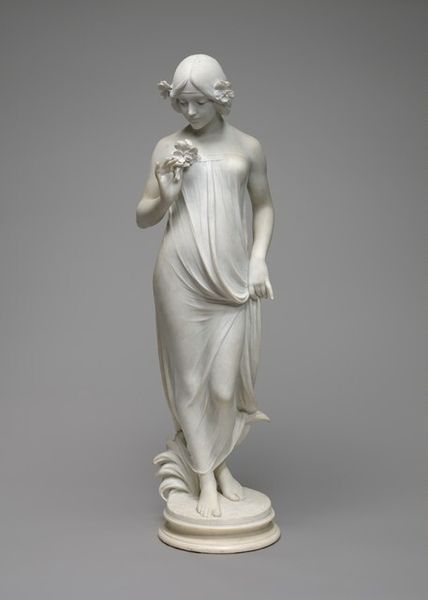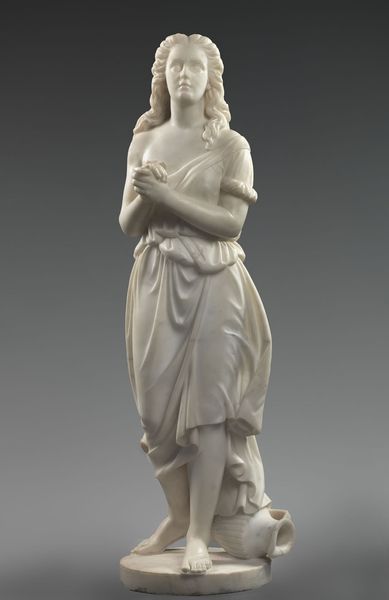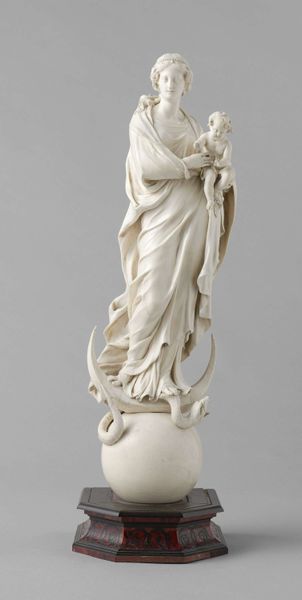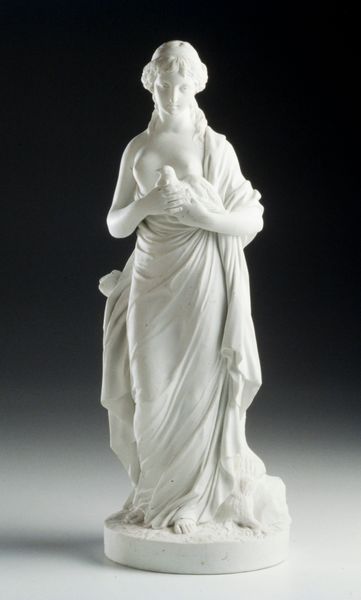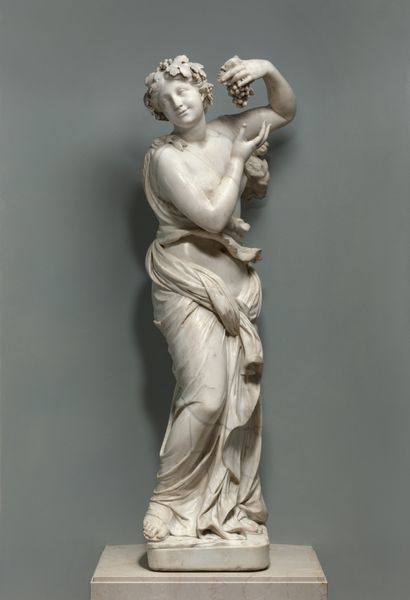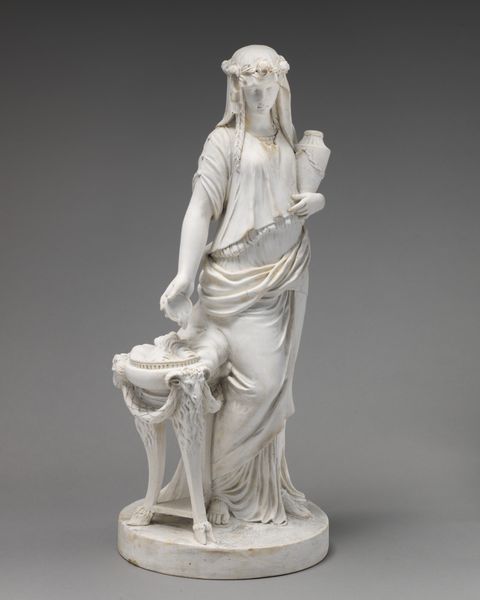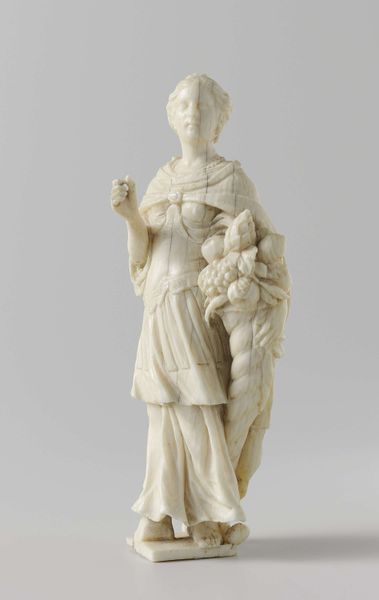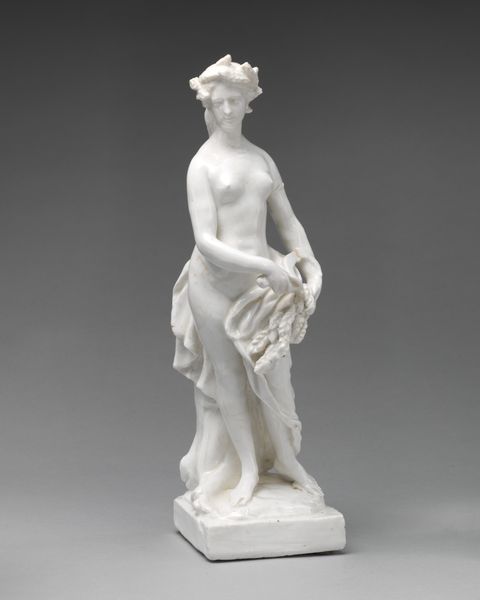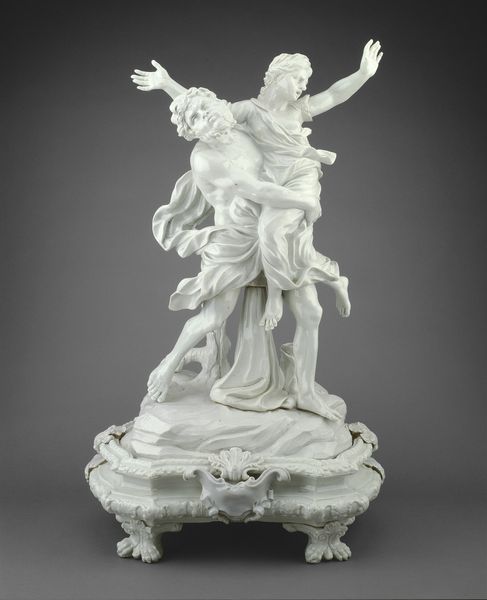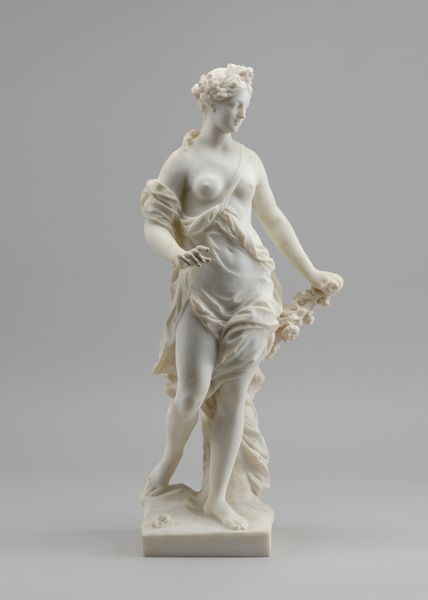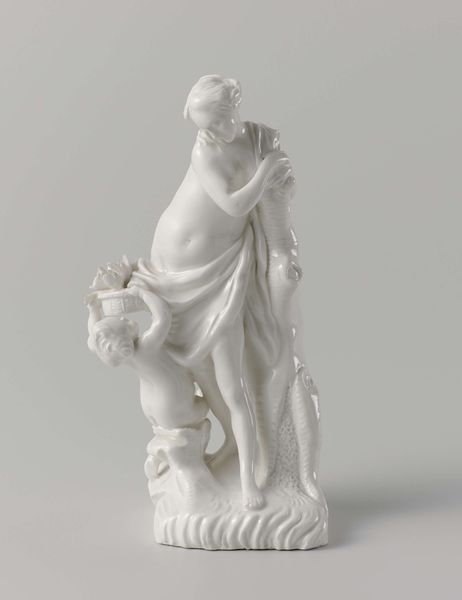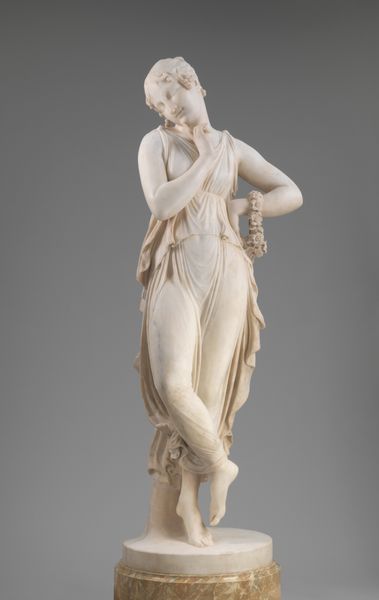
Dimensions: overall: 168.3 × 58.3 × 50.8 cm, 504 lb. (66 1/4 × 22 15/16 × 20 in., 228.613 kg)
Copyright: National Gallery of Art: CC0 1.0
Curator: We’re now looking at “Nymph of the Woods,” a marble sculpture created by Carlo Pittaluga in 1915. It strikes me as having an almost mournful quality. Editor: The classical structure of the figure, especially her draped robe, evokes a distinct sense of serenity, doesn't it? The soft modeling of the marble accentuates this tranquility. Curator: While the carving itself certainly demonstrates Pittaluga’s technical prowess, it’s impossible to separate the idealized figure from the cultural context of its time. Consider that it was produced amidst the turbulence of the First World War. How might anxieties around mortality, beauty, and loss resonate with such idealized forms? The "nymph" seems to be floating in a liminal state as though nature and humankind can never be fully separated. Editor: That interplay you identify between classicism and tension intrigues me. Looking closely at the nymph’s posture and gaze directed downward, I would say that Pittaluga has used contrapposto to portray an animated energy. And that he gives tension to the line between her neck and shoulders that keeps her alive and feeling and gives it motion, instead of marble stillness. Her forward foot presses lightly, as though she could drift. Curator: Perhaps her forward step is also her escape. By referencing classical myth, Pittaluga might subtly challenge the era’s narrow constructions of female identity and strength, gesturing towards a deeper relationship with the natural world as a sanctuary and refuge. Her classical gown and pose belie something new: The forward steps of a woman in society, moving through challenges with grace. Editor: Well, viewed formally, it's undeniably elegant how the sinuous lines of her body and drapery draw the viewer's eye from the base upwards and around, culminating in the delicate flowers she holds. I read that arrangement as a powerful, self-contained formal device, regardless of social considerations. Curator: And I suggest that seeing those forms within a broader sociohistorical lens allows for a much richer and more relevant appreciation. Editor: Thank you, it has been a productive exploration. I’m now more alert to those other potential resonances you identified.
Comments
No comments
Be the first to comment and join the conversation on the ultimate creative platform.
